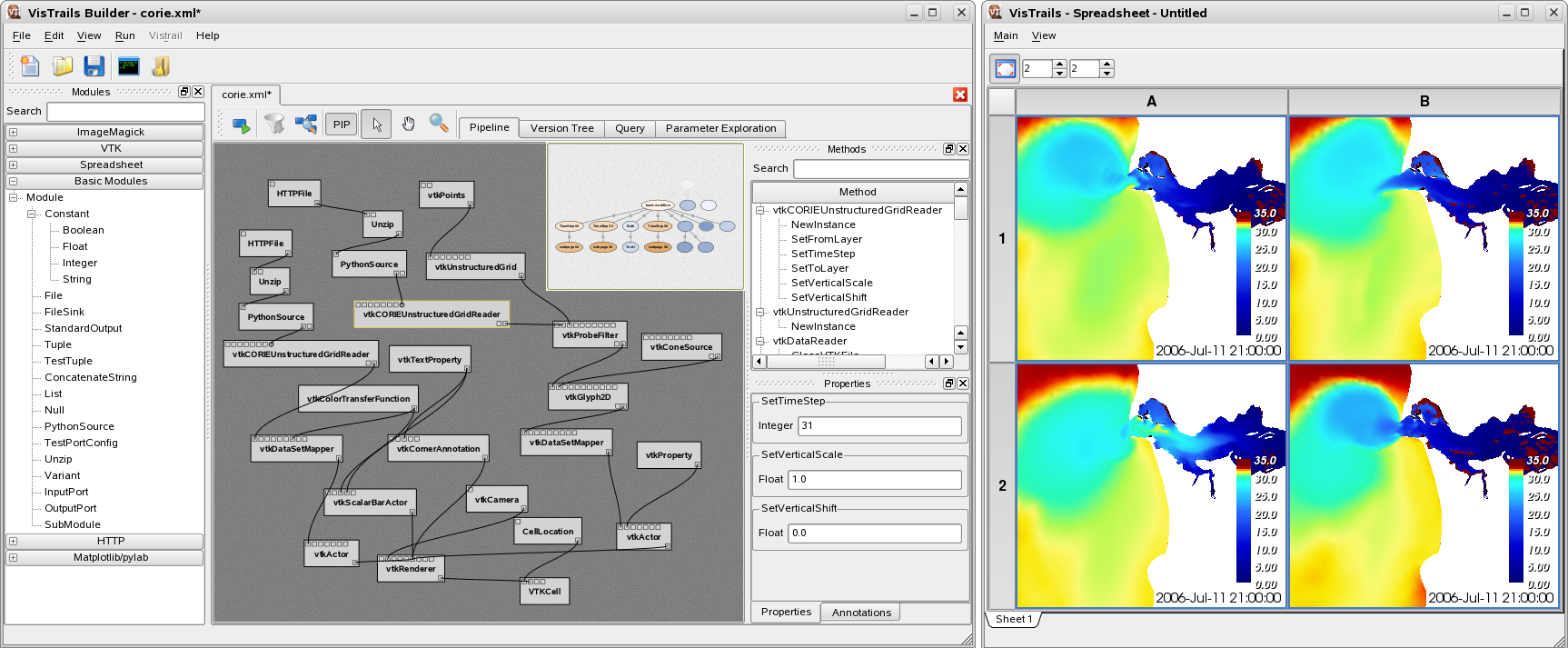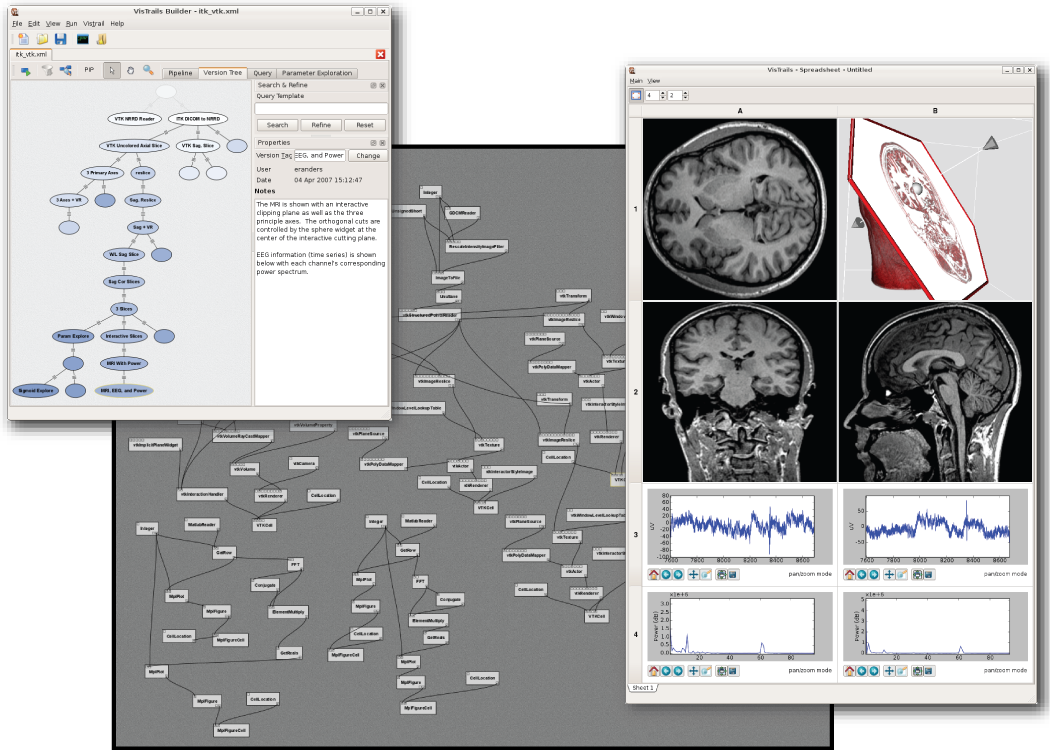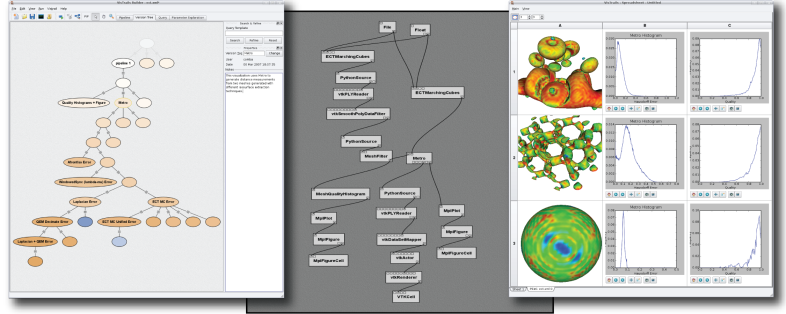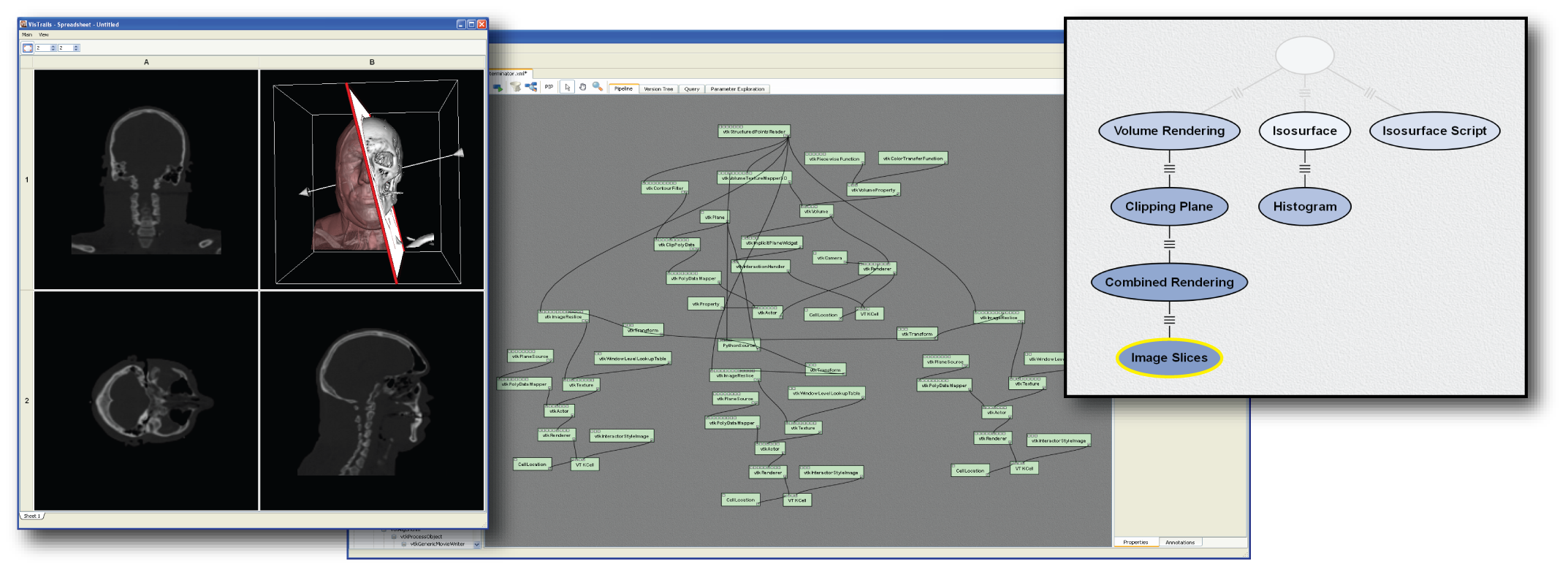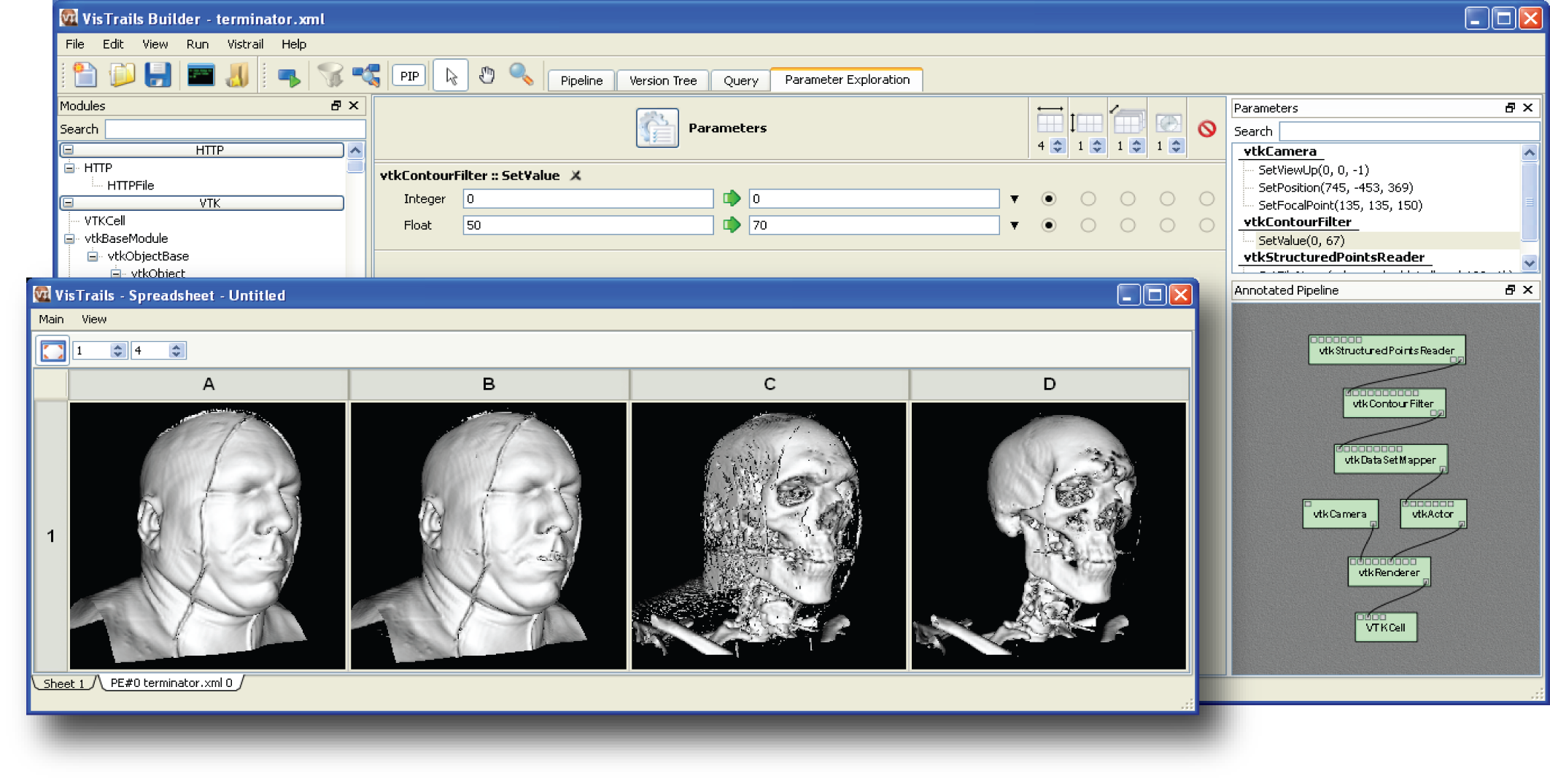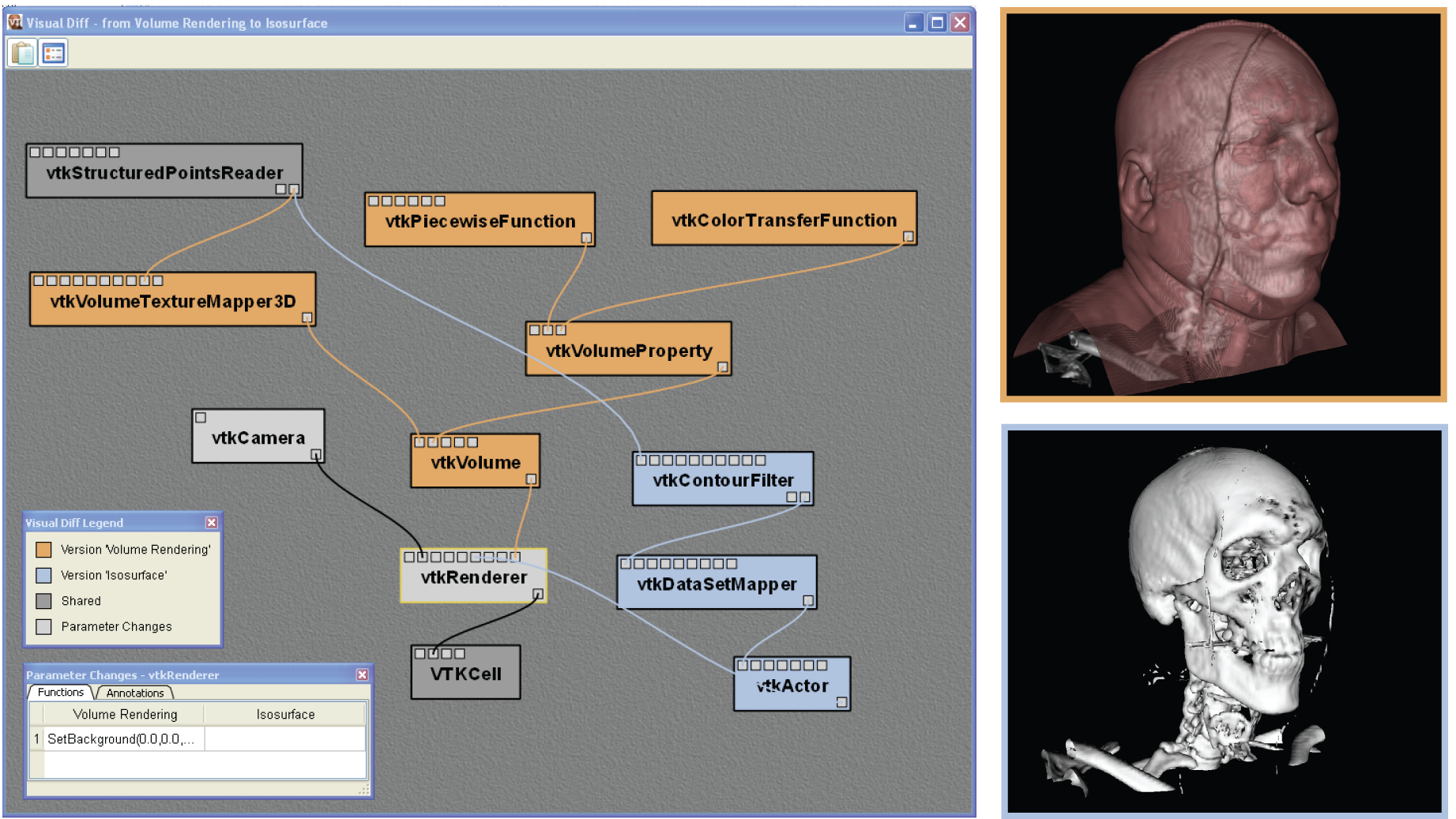Difference between revisions of "Documentation"
(Add stubs for screenshots) |
(Add a table of high res screenshots.) |
||
| Line 9: | Line 9: | ||
{|{{Prettytable}} | {|{{Prettytable}} | ||
| | |[[Image:Corie_example.png|256px]] | ||
|'''CORIE Example''' | |||
An example of VisTrails used for visualizing time steps of data unstructured grid data from the CORIE project. Left: The VisTrail builder is shown with a VTK pipeline that includes custom classes. Right: The spreadsheet is used to compare salinity in the Columbia River Estuary during different time steps. | |||
|- | |||
|[[Image:Memory_study.png|256px]] | |||
|'''Memory Study''' | |||
An example of VisTrails used for a visualizing measured data for a single patient in a memory study. The pipeline utilizes the VisTrails execution model to combine VTK, ITK, and Matplotlib libraries. | |||
|- | |||
|[[Image:Mesh_example.png|256px]] | |||
|'''Mesh Comparisons''' | |'''Mesh Comparisons''' | ||
A | An example of exploratory visualization for comparing isosurface extraction techniques using VisTrails. Complete provenance of the creation and exploration process is displayed in a history tree on the left. One pipeline that combines five different software libraries is shown | ||
in the middle. A parameter exploration of this pipeline for three different datasets and isosurface parameters is shown in the Visualization | |||
Spreadsheet on the right. | |||
|- | |||
|[[Image:Slicing.png|256.px]] | |||
|'''Interactive Visualization''' | |||
An example of a VisTrails pipeline used to create an interactive visualization within the spreadsheet of the visible human. An interactive cutting plane separates volume rendering and isosurfacing algorithms and is used to update orthogonal slices in separate windows. | |||
|- | |||
|[[Image:Parameter_exploration.png|256px]] | |||
|'''Parameter Exploration''' | |||
A snapshot of the parameter exploration interface for a simple one-dimensional exploration of isosurface values in the visible human. | |||
|- | |- | ||
| | |[[Image:visual_diff_composite.png|256px]] | ||
|''' | |'''Visual Differences''' | ||
The Visual Difference interface is shown for comparing volume rendering (top) and isosurfacing (bottom) visualizations of the visible human. Orange modules are unique to the volume rendering pipeline, Blue modules are unique to the isosurfacing pipeline, light gray modules have different parameters set, and dark gray modules are common. | |||
|- | |- | ||
|} | |} | ||
Revision as of 14:52, 24 July 2007
Getting Started
Documentation for installing VisTrails and additional packages is available on the Downloads page.
User's Guide and FAQ
An always evolving user's guide and is available along with a list of frequently asked questions.
Screen Shots
Video Tutorial
We are in the process of creating a video tutorial that can be used to guide users through the process of learning to use VisTrails. The videos that follow below are a preliminary version of this tutorial, and will keep evolving towards a complete tutorial.
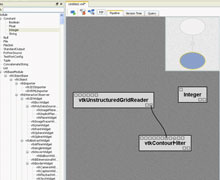
|
The Pipeline Builder
These videos demonstrate the basic usage of the Pipeline Builder, including how to add modules, connect modules, and modify module parameters.
|
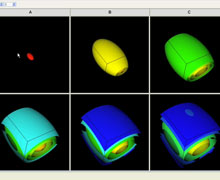
|
Parameter Space Exploration
These videos demonstrate more advanced use of the Pipeline Builder window. Parameter exploration allows easy mutli-dimensional comparative visualization generation to quickly and thoroughly explore data.
|
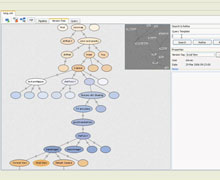
|
The Version Tree
These videos show interaction with the Version Tree. Emphasis here is on interaction with the widgets, searching and refining the versions displayed, and performing diffs between versions to highlight changes.
|
Other Videos
We have produced several videos exploring different features of the system.Please note that some of these videos were generated using older versions of VisTrails, and the interface might look different than the one available in the latest releases.
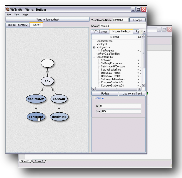
|
Demonstration
This video shows basic usage of VisTrails by going through three examples. Some of the features shown are:
As this is an old version of the system, some of the features are not currently available. |
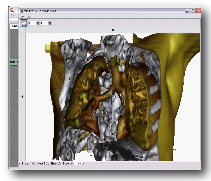
|
Radiation Oncology
This video shows how some of VisTrails features were used on a Radiation Oncology study. As this is an old version of the system, some of the features are not currently available. |
